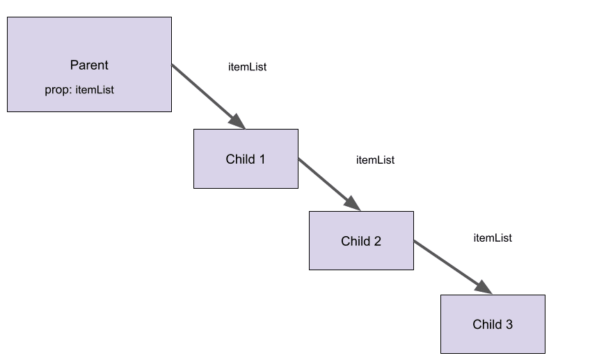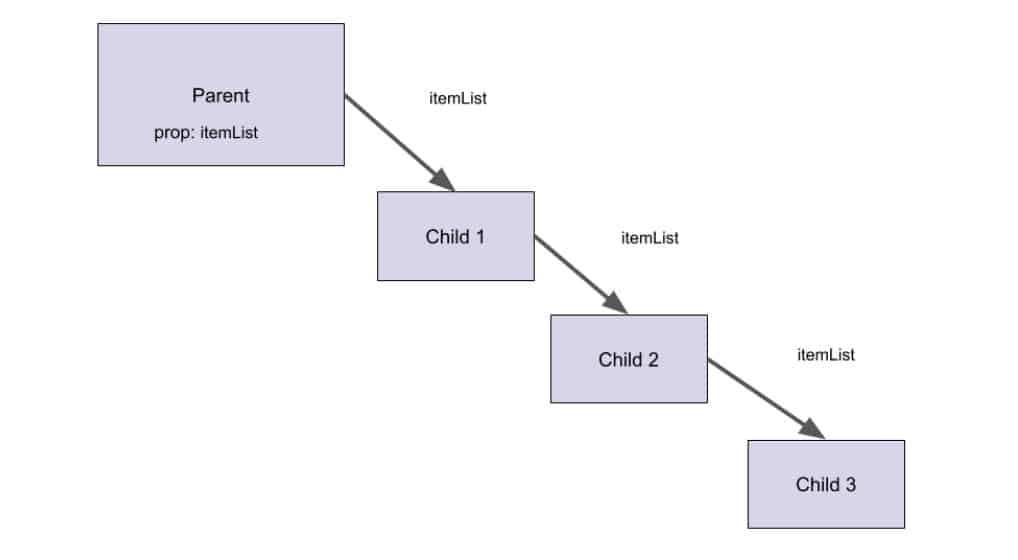Article summary
When building complex user interfaces with front-end frameworks, managing the data flow between components can quickly become challenging. If you’ve worked with frameworks like React, Svelte, or Vue, you’re likely familiar with the process of passing props from parent to child components. This can lead to cumbersome “prop drilling” when dealing with deeply nested component hierarchies. Below, I’ll discuss how to use Svelte’s Context API to simplify state management.
Example

In the example above, the prop itemList is passed through all children to be used in child 3, the lowest level component. This leads to tight coupling between components. It also means that all connected components will be affected by changes to itemList.
Leveraging Svelte’s Context API
By leveraging Svelte’s Context API, you can simplify your component structure, and reduce coupling in your application. It allows you to directly access state in the parent from any of its children without drilling down the component tree.
First, you create the context in the parent.
import { setContext } from 'svelte';
setContext('dogNames', value);
It can then be accessed in its children using getContext.
import { getContext } from 'svelte';
const dogNameContext = getContext('dogNames');
The context’s state is scoped to the component tree and cannot be accessed in other parts of your application.
It is important to note that by default a context is not reactive. In Svelte 4 you can create a reactive context by making a Writable store.
// parent component
const dogNameStore = writable([name: "Fido", name: "Bowser", name: "Scoot"]);
setContext("dogNames", dogNameStore);You can then access the values by subscribing to the context.
import { getContext } from 'svelte';
const dogNameContext = getContext('dogNames');
let nameList;
$: dogNameContext.subscribe((value) => {
nameList = value;
});You can update the values in the context by using set. After setting a new value, the writable object is updated.
// before: [name: "Fido", name: "Bowser", name: "Scoot"]
dogNameContext.set([name: "Fiwo", name: "Browser", name: "Scoop"]);
// after: [name: "Fiwo", name: "Browser", name: "Scoop"]
The Svelte Context API is a powerful tool for managing state across component trees. It eliminates the need for tedious prop drilling and reduces tight coupling between components. By combining the Context API and reactive features like writable stores, you can create clean and scalable solutions for sharing and updating state in your applications.

